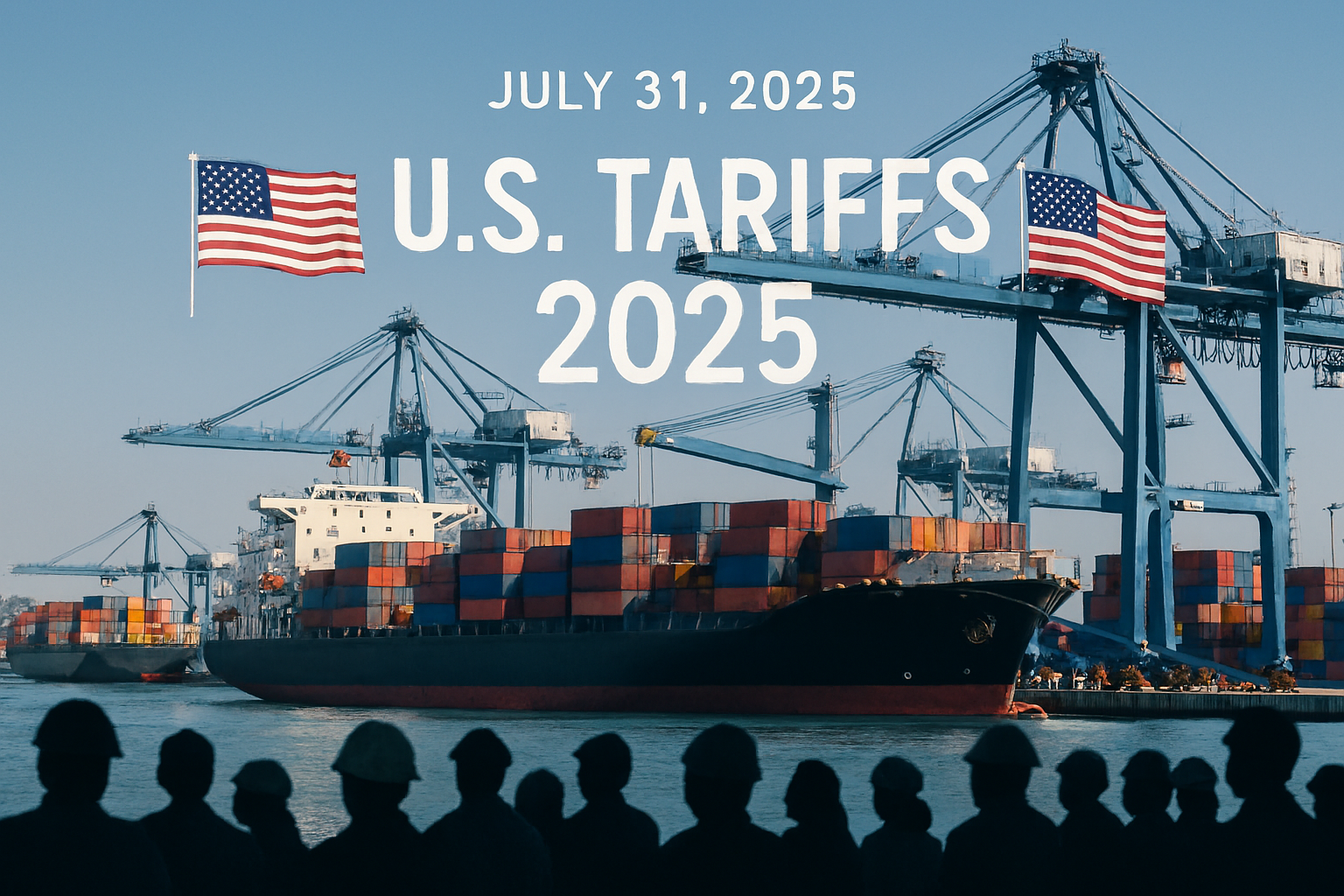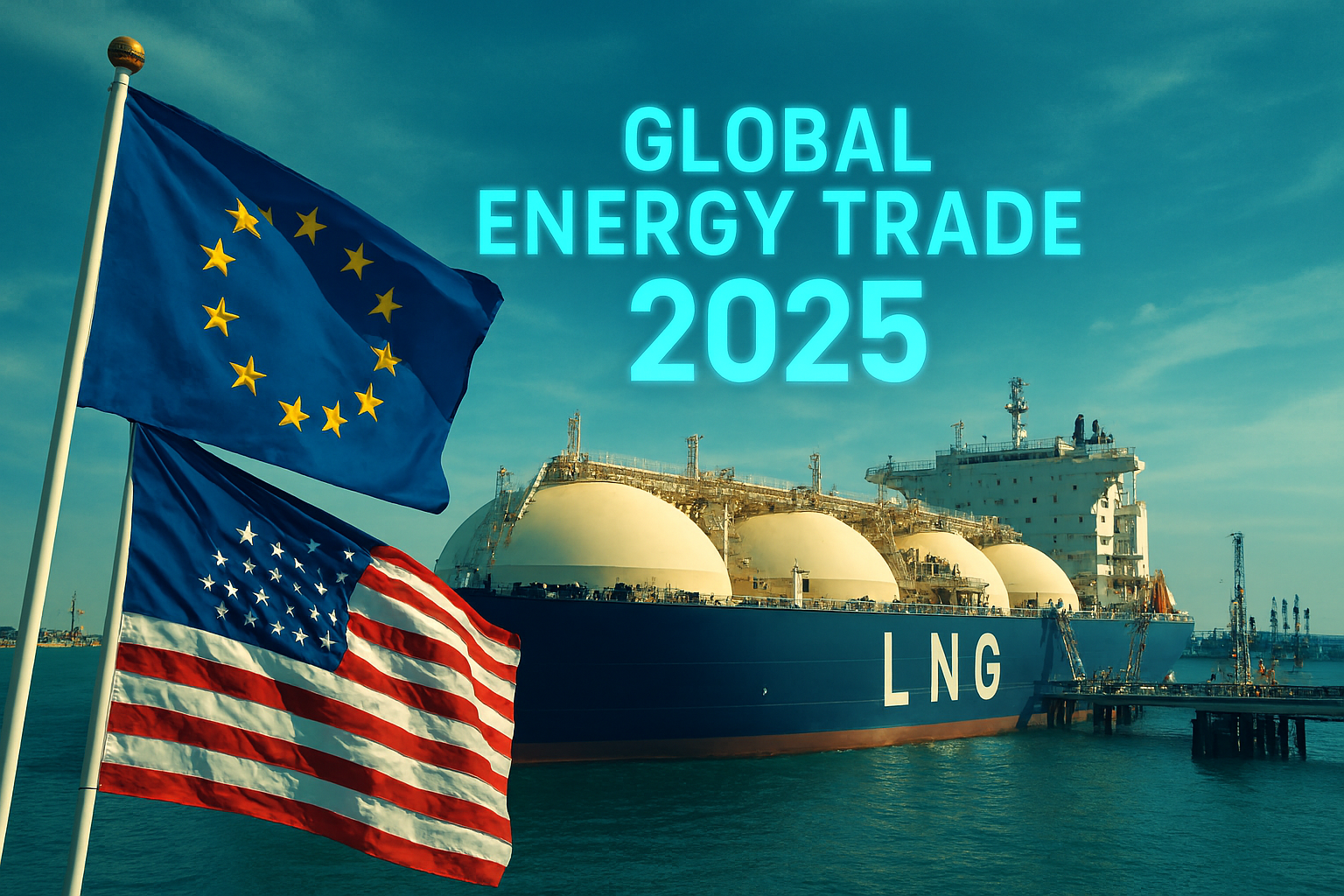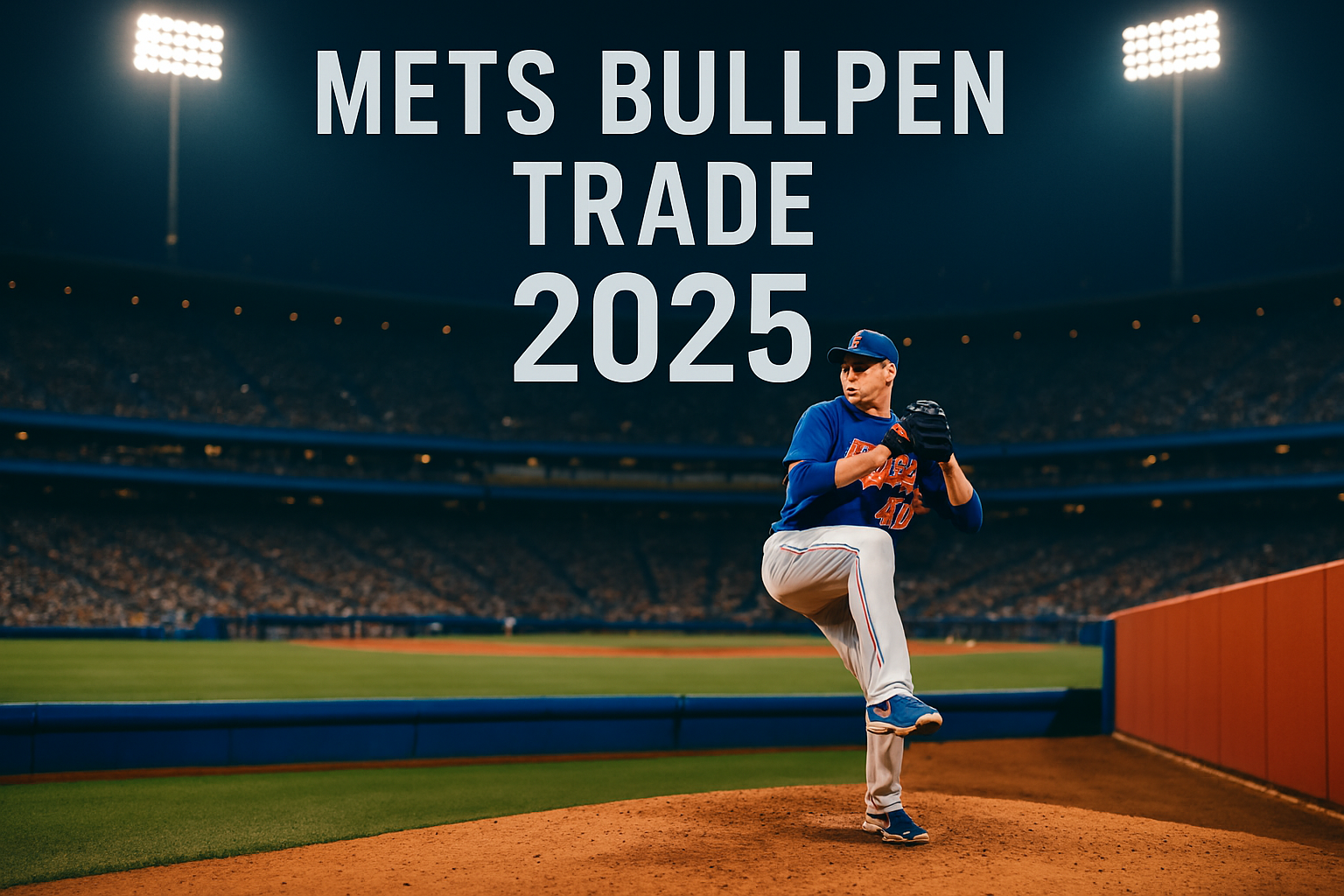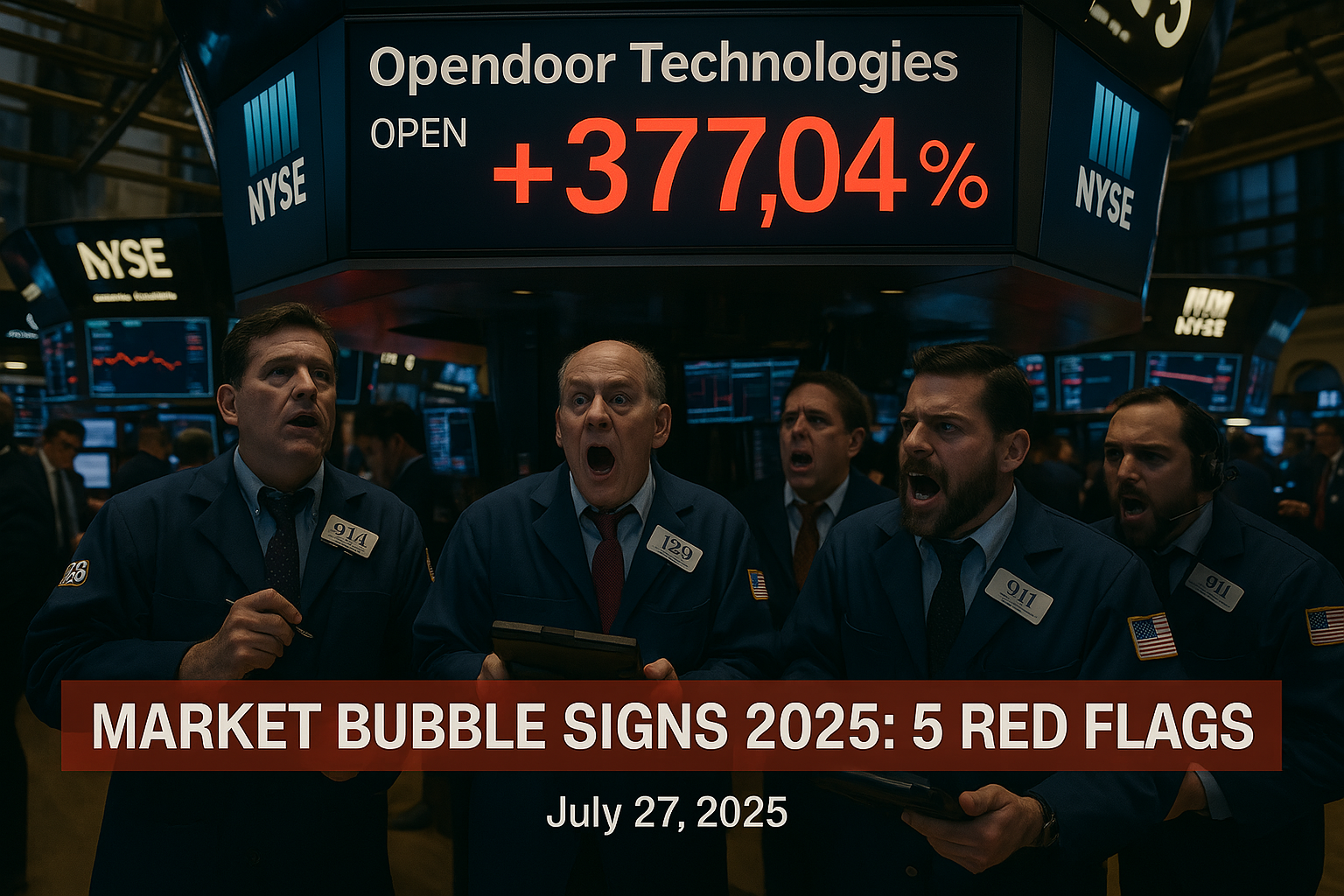U.S. Tariffs 2025 Trading Partners: Trump’s Executive Order Shakes Global Markets

President Donald Trump’s sweeping executive order, signed on July 31, 2025, has unleashed a new wave of tariffs on virtually every U.S. trading partner, sending shockwaves through global markets and supply chains. With tariffs ranging from 10% to 50% set to take effect on August 7, 2025, nations like the European Union, Japan, Brazil, and Canada face steep levies, while Mexico secures a 90-day reprieve to negotiate, per The Wall Street Journal. The U.S. tariffs 2025 trading partners policy, justified by Trump as a tool to address trade deficits and boost domestic manufacturing, has sparked a 20% plunge in copper prices, a dip in Treasury yields, and a jittery stock market, per Reuters. As a professional entrepreneur in international trade, I see both opportunities and risks in this bold move, but the immediate economic turbulence demands strategic navigation. Are these tariffs a masterstroke for American industry or a reckless gamble that could ignite a global trade war?
The Tariff Landscape: Who Faces What
Trump’s executive order escalates tariffs across a spectrum of trading partners, with rates tailored to trade balances and compliance with the U.S.-Mexico-Canada Agreement (USMCA):
- Major Industrialized Economies: The EU, Japan, and South Korea face a 15% tariff on all goods, effective August 7, 2025, down from a threatened 25% after negotiations, per J.P. Morgan. South Korea secured this rate with a $350 billion investment pledge in U.S. projects, per Reuters.
- Trade Surplus Nations: Countries where the U.S. runs a trade surplus, such as the UK, face a 10% tariff, with exemptions for the first 100,000 UK vehicles, per BBC.
- High-Tariff Targets: Brazil faces a 50% tariff, partly tied to political tensions over former President Jair Bolsonaro’s legal issues, while Canada faces a 35% tariff on non-USMCA-compliant goods, per The New York Times.
- Mexico’s Reprieve: After a call with President Claudia Sheinbaum, Trump extended existing tariffs for 90 days, sparing Mexico higher rates if USMCA compliance is met, per The Wall Street Journal.
- Product-Specific Tariffs: A 50% tariff on copper pipes, tubes, and semi-finished products (excluding raw materials like ores) takes effect August 6, 2025, while steel, aluminum, and autos face 50% and 25% tariffs under Section 232, per Reuters. Copper, pharmaceuticals, semiconductors, and lumber are exempt from reciprocal tariffs, per White House.
- De Minimis Exemption: Trump’s July 30, 2025, order closes the de minimis exemption for low-value shipments globally by August 29, 2025, impacting e-commerce, per Trade Compliance Resource Hub.
The average U.S. tariff rate, estimated at 18.4% in July 2025, is the highest in over a century, contributing 5% of federal revenue, up from 2% historically, per Wikipedia.
Market Reactions: Stocks, Copper, and Yields
The tariff announcement triggered immediate market volatility:
- Stock Markets: The S&P 500 fell 0.4%, the Nasdaq dipped 0.1%, and the Dow marked its fourth consecutive decline on July 31, 2025, as investors fretted over slowing growth and rising goods inflation, per The Wall Street Journal. European stocks gained 2% since April, while the U.S. dollar index dropped 4.4%, per Reuters.
- Copper Prices: Copper futures plummeted over 20% on July 31, the largest single-day drop since the 1960s, as Trump’s 50% tariff excluded raw copper, unwinding a 26% U.S. premium over London prices, per Reuters. This benefits manufacturers but hurts U.S. copper miners, per Reuters.
- Treasury Yields: The 10-year Treasury yield slipped to 4.36% from 4.4%, reflecting cautious investor sentiment amid trade uncertainty, per The Wall Street Journal and Reuters.
Chart 1: U.S. Stock Market Performance Post-Tariff Announcement
| Date | S&P 500 Change | Nasdaq Change | Dow Change |
|------------|----------------|--------------|------------|
| July 31, 2025 | -0.4% | -0.1% | -0.5% |
| April 2, 2025 (Tariff Shock) | -1.2% | -0.8% | -1.0% |
| Since April 2, 2025 | +4.1% | +3.5% | +2.8% |
*Source: Reuters, Wall Street Journal*Chart 2: Copper Price Movements (Comex, July 2025)
| Date | Price ($/ton) | Daily Change | Premium vs. London |
|------------|---------------|--------------|--------------------|
| July 30, 2025 | $9,630.50 | +2.5% | 26% |
| July 31, 2025 (Post-Tariff) | $7,960.00 | -20.3% | 10% |
| Year-End 2024 | $8,755.00 | - | 13% |
*Source: Reuters, J.P. Morgan*Legal Challenges: A Constitutional Showdown
The tariffs’ legality faces scrutiny in federal courts:
- Court Rulings: On May 28, 2025, the U.S. Court of International Trade ruled Trump’s use of the International Emergency Economic Powers Act (IEEPA) for “fentanyl” and reciprocal tariffs unconstitutional, citing Congress’s sole authority to levy tariffs. The Federal Circuit granted a stay on May 29, keeping tariffs in effect, with arguments heard on July 31, 2025, per Reuters.
- Key Arguments: Businesses and states argue IEEPA overreach violates the nondelegation doctrine, while Trump’s team claims national security and trade deficits justify emergency powers, per Gibson Dunn. A Supreme Court appeal is likely, per Wikipedia.
- Implications: If courts strike down IEEPA tariffs, the effective tariff rate could drop to 5%, boosting GDP by 0.5% in late 2025, per J.P. Morgan.
Entrepreneurial Insights: Navigating the Tariff Storm
As an entrepreneur in international trade, I see the tariffs as a double-edged sword:
- Opportunities:
- Domestic Manufacturing: Tariffs incentivize U.S. production, especially in exempt sectors like semiconductors. Entrepreneurs can explore partnerships with U.S. manufacturers to bypass import costs, leveraging the $108 billion in tariff revenue (2025 so far) to fund domestic incentives, per Wikipedia.
- Negotiation Leverage: The 90-day extensions for Mexico and prior deals with Japan (15% tariff) and the UK (10% on most goods) show Trump’s willingness to negotiate, per Reuters. Entrepreneurs can lobby for exemptions or lower rates through trade associations, as seen with Chile’s copper advocacy, per Reuters.
- E-Commerce Pivot: The de minimis exemption closure by August 29, 2025, pushes e-commerce businesses to localize supply chains or partner with U.S. distributors, per Trade Compliance Resource Hub.
- Risks:
- Cost Increases: Tariffs raise input costs, with 49% borne by U.S. consumers and 39% by businesses, per Goldman Sachs. Entrepreneurs in retail (e.g., Walmart) face pressure to absorb costs or raise prices, risking customer backlash, per The New York Times.
- Supply Chain Disruptions: The copper tariff’s 20% price drop signals volatility in raw materials, impacting electronics and construction firms. Entrepreneurs must diversify suppliers (e.g., Chile, Canada) to mitigate shortages, per Reuters.
- Retaliation Risks: Canada’s 25% tariff on U.S. autos and Colombia’s initial 25% retaliatory tariff (later reversed) show trading partners’ willingness to escalate, per PBS News. Entrepreneurs exporting to these markets should prepare for higher costs, per PBS News.
Actionable Strategies:
- Hedge Costs: Use futures contracts to lock in copper and steel prices before August 7, 2025, to avoid volatility, as seen with the 17% Comex copper drop, per Reuters.
- Localize Production: Invest in U.S.-based facilities, especially in exempt sectors like semiconductors, to capitalize on tariff exemptions and potential tax breaks, per White House.
- Engage Policymakers: Join trade groups like the National Mining Association to influence tariff exemptions, as Chile and Canada have done, per Reuters.
- Monitor Legal Outcomes: Track the Federal Circuit’s ruling post-July 31 arguments, as a decision against IEEPA tariffs could lower costs significantly, per J.P. Morgan.
Broader Economic Implications
- Inflation and Consumers: Tariffs have driven a 2.7% annual price increase through June 2025, impacting clothing, coffee, and appliances, per BBC. Adidas and Nike confirmed price hikes due to 20% tariffs on Vietnam and Indonesia, per BBC.
- Global Trade: The EU’s 15% tariff deal and Japan’s $350 billion investment show negotiations can soften impacts, but 60 “worst offender” nations face higher rates, risking WTO disputes, per BBC. The U.S.’s WTO budget suspension since March 2025 weakens global trade enforcement, per Wikipedia.
- GDP Growth: J.P. Morgan forecasts a 0.75% annualized GDP growth for late 2025, down from 3% in Q2, due to tariff disruptions, with Brazil’s GDP potentially falling 0.6–1%, per J.P. Morgan.
- Manufacturing: Tariffs aim to revive U.S. manufacturing, but higher input costs (e.g., copper) could stifle sectors like autos and electronics, per Reuters. The loss of 5 million manufacturing jobs since 1997 underscores the challenge, per White House.
Critical Perspective: Establishment Narrative vs. Reality
The White House claims tariffs will “restore economic sovereignty” and create jobs, per White House. However, the 49% consumer cost burden and $34 billion in lost sales for U.S. firms suggest otherwise, per Reuters. The narrative of tariffs as a panacea ignores contradictions: they raise revenue ($108 billion in 2025) but disrupt supply chains and risk retaliation, per Wikipedia. The copper tariff’s limited scope (excluding raw materials) undermines claims of boosting U.S. mining, as domestic production remains years away, per Reuters. Moreover, the IEEPA’s use for broad tariffs faces constitutional challenges, with courts leaning against Trump’s authority, per Gibson Dunn. Entrepreneurs must prepare for a potential tariff rollback if courts rule against the administration.
What’s Next for Stakeholders
- Investors: Monitor the S&P 500 and copper futures for volatility. Gold’s 5.9% rise since April suggests a safe-haven shift, per Reuters.
- Businesses: Diversify supply chains and lock in prices to mitigate tariff costs. Retailers like Walmart should explore domestic sourcing, per The New York Times.
- Policymakers: Track the Federal Circuit’s ruling and WTO disputes, as a loss could force Congressional approval, per Wikipedia.
- Consumers: Expect price hikes on imported goods, with appliances and autos most affected, per BBC.
Conclusion
The U.S. tariffs 2025 trading partners policy, driven by Trump’s executive order, has reshaped global trade, with 15–50% tariffs hitting the EU, Japan, Brazil, and Canada, while Mexico gains breathing room. The 20% copper price crash, slipping Treasury yields, and stock market dips signal immediate economic strain, but entrepreneurs can seize opportunities in domestic manufacturing and trade negotiations. As legal challenges loom and retaliation risks grow, the tariff gamble tests America’s economic resilience. Share your strategies for navigating this trade war below.










